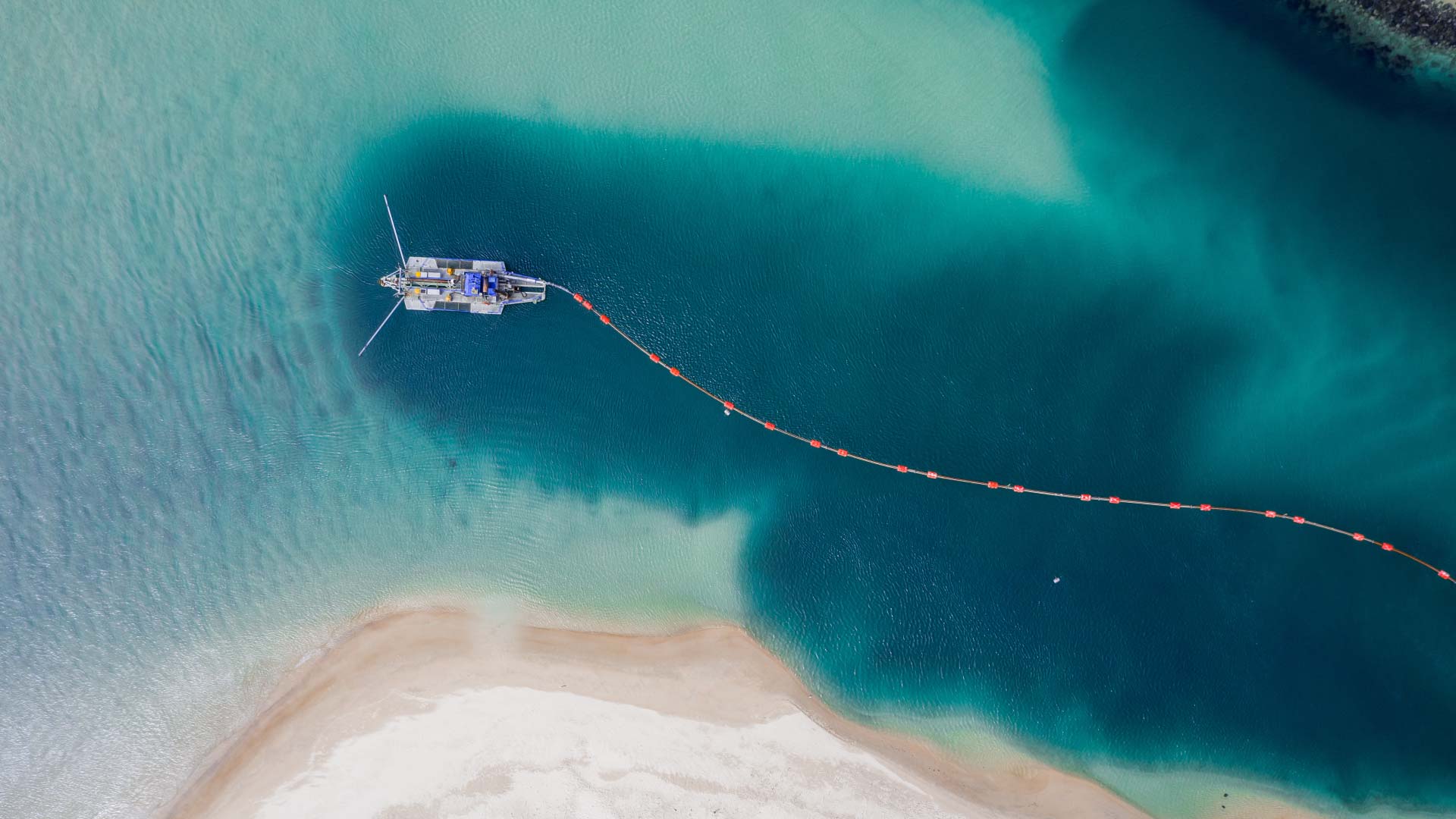Understanding the Dredging Process
The fishing industry is a cornerstone of many coastal economies, providing food security, livelihoods, and cultural identity for millions worldwide. At the same time, coastal resilience—the ability of coastal ecosystems and communities to recover from natural and human-induced challenges—is crucial in the face of climate change and environmental degradation.
Dredging, the process of removing sediment and debris from water bodies, is a multifaceted solution that directly supports the fishing industry and enhances coastal resilience. This blog explores the intricate ways dredging benefits fishing operations, preserves marine habitats, and strengthens coastal communities.
Dredging involves the excavation of sediment, sand, and other materials from the bottom of water bodies to improve navigability, restore ecosystems, or protect coastal areas. It is conducted using various techniques, such as:
- Mechanical Dredging: Uses equipment like clamshell buckets to scoop sediment.
- Hydraulic Dredging: Employs pumps to suck up sediment and transfer it elsewhere.
- Specialized Dredging: Tailored methods for environmental or industrial needs.
Key applications of dredging include maintaining ports, restoring aquatic habitats, and mitigating erosion. These activities are vital for the fishing industry, which relies on clear, navigable waters and healthy marine ecosystems.
Maintaining Navigable Waterways for Fishing Operations
Sediment buildup in harbors and waterways can obstruct vessel movement, posing risks to fishing operations. This is particularly problematic in areas with significant sediment deposition from rivers or tidal flows. Dredging solves this issue by clearing channels and harbors, ensuring that fishing vessels can navigate safely and efficiently.
For example, the revitalization of a small fishing port in Maine involved dredging to remove decades of accumulated silt. The project not only restored access for local fishermen but also boosted the port’s economic activity by attracting more boats and buyers.
Restoring and Preserving Critical Fish Habitats
Healthy fish populations depend on thriving ecosystems like coral reefs, estuaries, and seagrass beds. However, sedimentation can smother these habitats, reducing their ability to support marine life. Dredging, when done responsibly, can restore these vital ecosystems.
For instance, strategic dredging in Florida’s Biscayne Bay helped remove excess sediment from critical seagrass beds. This action improved water clarity, boosted biodiversity, and supported fish populations crucial to both commercial and recreational fishing.
Enhancing Coastal Resilience Through Beach Nourishment
Coastal erosion is a growing threat to fishing communities, as it weakens shorelines and damages infrastructure. Dredged materials, such as sand and sediment, are often repurposed for beach nourishment projects to combat this erosion.
By rebuilding beaches, these projects protect coastal infrastructure from storm surges and rising sea levels. For fishing communities, this means safeguarded harbors, docks, and processing facilities, ensuring long-term operational stability.
Improving Water Quality to Support Marine Life
Pollutants trapped in sediment, such as heavy metals and agricultural runoff, can degrade water quality and harm marine life. Algal blooms, caused by nutrient overloads, are particularly detrimental, often leading to fish kills and ecosystem collapse.
Dredging removes these harmful sediments, restoring water quality and creating healthier conditions for marine life. Improved water quality directly benefits the fishing industry by promoting robust fish populations and reducing operational risks associated with polluted waters.
Supporting Sustainable Aquaculture
Aquaculture, the farming of fish and shellfish, is an increasingly important component of global food production. However, sediment and debris can clog water flow in aquaculture facilities, reducing productivity and raising maintenance costs.
Dredging ensures optimal conditions for aquaculture by maintaining water flow and removing debris. In Japan, periodic dredging of coastal fish farms has proven essential for sustaining high yields and ensuring the long-term viability of the industry.
Dredging and Climate Change Adaptation
Climate change poses severe challenges to coastal areas, including rising sea levels and more frequent storms. These changes threaten both natural ecosystems and human infrastructure.
Dredging plays a key role in climate adaptation by maintaining levees, channels, and storm surge barriers. These measures not only protect fishing infrastructure but also ensure the resilience of the ecosystems that support marine life. Over time, these adaptations provide fishing communities with the tools to withstand environmental changes and continue thriving.
Economic Benefits of Dredging for Fishing Communities
Beyond environmental and operational benefits, dredging has significant economic impacts. By keeping waterways open and habitats healthy, it supports the livelihoods of fishermen and aquaculture workers. Additionally, dredging projects create jobs in construction, habitat restoration, and port maintenance.
For example, a dredging project in Louisiana generated hundreds of jobs and restored vital shipping routes, enabling the local fishing industry to expand its operations. The ripple effects of such projects boost the economy of entire coastal regions.
Conclusion
Dredging is a powerful tool that strengthens the fishing industry and enhances coastal resilience. By maintaining navigable waterways, restoring habitats, improving water quality, and fortifying shorelines, it ensures that coastal communities and ecosystems can thrive in the face of challenges.
Investing in sustainable dredging practices is essential to protect these critical benefits. As climate change and environmental pressures continue to grow, dredging will remain a cornerstone of efforts to sustain the fishing industry and preserve coastal ecosystems for future generations.
